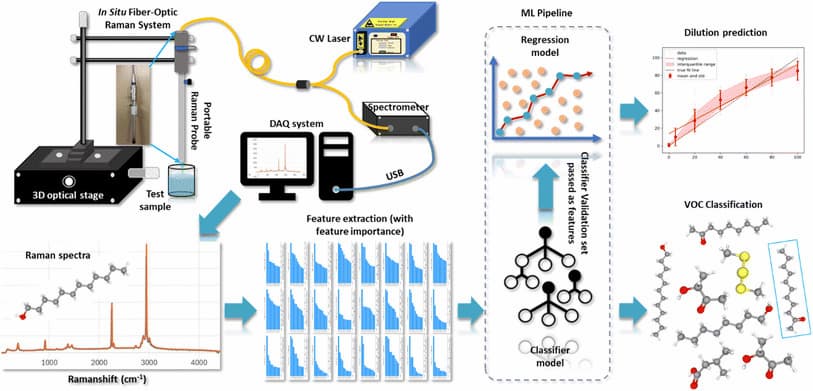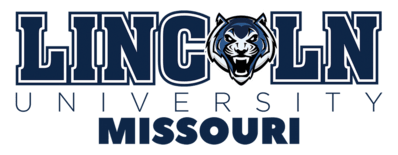Lincoln University Assistant Professor Qingbo Yang Publishes Research on Rapid Foodborne Illness Detection Method
Office of Communications and Marketing
Young Hall
820 Chestnut Street
Jefferson City, MO 65101
 Figure 3, from Dr. Qingbo Yang’s paper published in RSC Advances, shows Yang and his colleagues’ process for rapidly analyzing samples for foodborne pathogens.
Figure 3, from Dr. Qingbo Yang’s paper published in RSC Advances, shows Yang and his colleagues’ process for rapidly analyzing samples for foodborne pathogens.
Foodborne illnesses are a pressing public health issue. According to the Centers for Disease Control and Prevention, an estimated 48 million cases of foodborne illness occur in the United States every year.
Foodborne illnesses are caused by the consumption of viral and bacterial pathogens, such as E. coli, norovirus and Salmonella. These illnesses can manifest a variety of symptoms — some mild, some deadly.
Unfortunately, current pathogen detection methods are outdated and time-consuming, sometimes requiring days or even weeks to identify contaminants. Even the most advanced techniques still take several hours to deliver results, often at a high cost.
Some researchers are looking to change that.
Dr. Qingbo Yang, an assistant professor and researcher at Lincoln University of Missouri, published a research paper in February detailing his and his colleagues’ work to advance foodborne pathogen detection technology.
“The standard molecular biology-based workflow is inherently complex and cannot be easily shortened," Yang said. "As a result, existing approaches are not suitable for real-time, on-site detection. This delay increases the risk of contaminated food reaching consumers before the problem is discovered.”
Yang and his collaborators at Missouri S&T began exploring a new approach to detecting foodborne pathogens about four years ago. Their goal was to dramatically reduce detection time and make on-site testing possible.
By developing portable sensing systems using Raman spectroscopy probes and machine learning algorithms, Yang said they could greatly lower the barrier between lab research and practical, on-the-ground problem solving.
Raman spectroscopy is a process that uses light to identify molecules, and machine learning refers to computer systems that can learn and adapt with the help of algorithms and statistical models.
“We quickly put this concept into action and published a preliminary publication in 2023,” Yang said. “Since then, we expanded our experimental dataset and trained more powerful machine learning models.”
Their research focused on detecting volatile organic compounds (VOCs), which are small molecules released by pathogens when foods spoil. These VOCs can cause sour smells associated with spoiled food.
The type and quantity of VOCs vary between pathogens, so they also provide an avenue for identification.
That’s where Yang and his colleagues come in. They speculated that by rapidly detecting VOCs and measuring their concentrations, trained machine learning methods could be employed to trace those VOCs back to their specific foodborne pathogens.
Their years of work culminated in their recently published paper, which sheds light on how they used a specialized algorithm, known as a stochastic generalization model, to recognize patterns in unknown food samples and detect the presence and concentration of VOCs.
“This study successfully combines and advances non-contact Raman spectroscopy probes with powerful machine learning algorithms to deliver accurate results from unknown samples in just a few minutes,” Yang said.
While there is still much work to do, Yang’s paper and the research within lay the groundwork for real-time, field-deployable food safety diagnostics.
Yang published his paper in RSC Advances following a previous publication in Measurement, both of which are respected journals. RSC Advances focuses on interdisciplinary chemical sciences, while Measurement focuses on engineering and applied sensor research.
Yang said publishing the paper in a high-visibility, chemistry-focused journal like RSC Advances strengthens the reputation of his lab and Lincoln University Cooperative Research.
“Ultimately, this research contributes meaningfully to Lincoln University’s growing capabilities in scientific research and innovation,” Yang said.
This research received support from the USDA Evans-Allen Program, USDA-NIFA NEXTGEN Program and Ewing Marion Kauffman Foundation. While significant, this project represents only one of several cutting-edge research areas that Yang and his colleagues at other institutions continue to engage in.
“These efforts span a diverse range of topics, including microplastic degradation, engineered yeast, PFAS detection and drug delivery processes, among others,” Yang said.
His collaborators were Bohong Zhang, Anand K. Nambisan, Abhishek Prakash Hungund, Xavier Jones, Samira Mahdi and Jie Huang.
Yang added that this publication is not the end of the story. He and his colleagues have already started experiments for the next paper and have drafted an outline for a fourth article after that.
“We’re not stopping here," Yang said. "We aim to further improve sensor sensitivity for detecting even lower concentrations of contaminants, and we’re exploring entirely new detection mechanisms that go beyond Raman-based approaches."
“Stay tuned — many more exciting developments and real-world applications will be published in the coming years.”
Yang and his colleagues' article is available here.
Learn more about Lincoln University Cooperative Research here.
